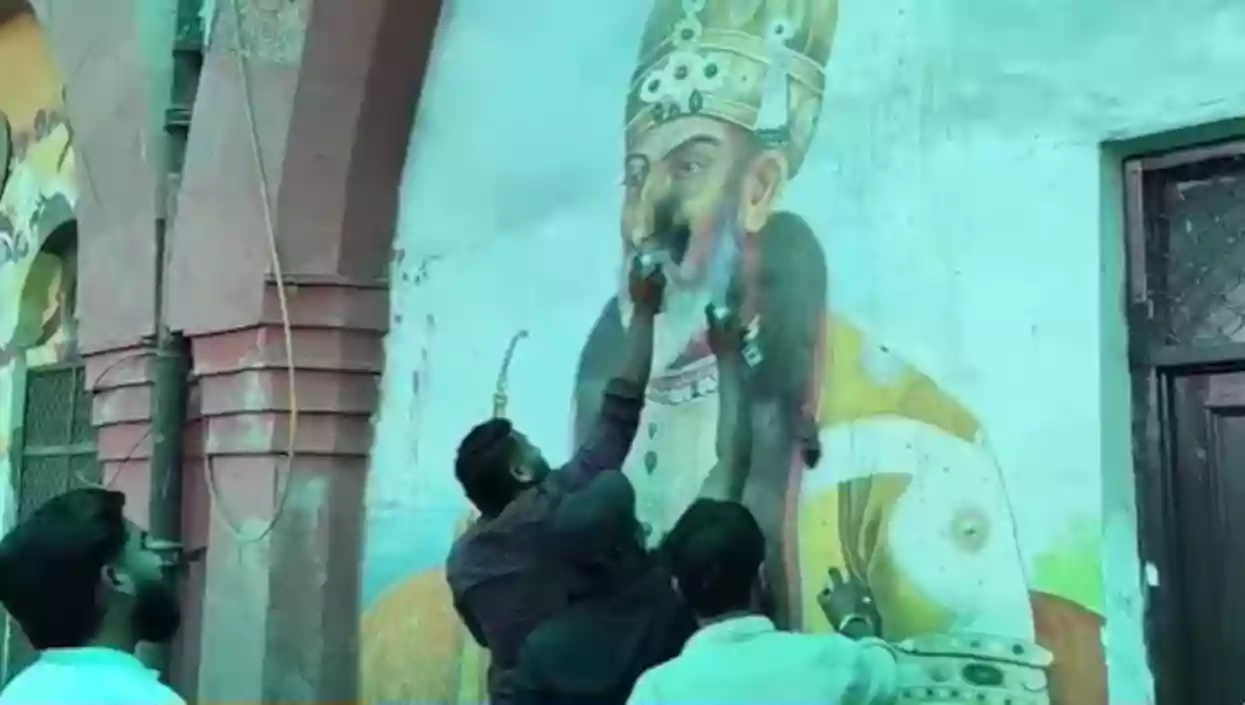.gif)
.gif)

Chaos broke out at Ghaziabad railway station on Friday after members of the Hindu Raksha Dal defaced a Mughal-era painting, believing it to be of emperor Aurangzeb. The painting was part of a beautification project aimed at enhancing the station’s appearance.
Shouting slogans of 'Jai Shri Ram', the protesters expressed outrage at what they believed was the glorification of a "Muslim invader" on public property. They blackened the painting with ink and demanded its removal, calling for Indian heroes like Maharana Pratap and Surajmal to be honored instead.
Vipin Rajput, a member of the Hindu Raksha Dal, claimed that images of "vile historical figures" like Aurangzeb should not be displayed at public places, accusing the emperor of committing atrocities against Hindus during his rule. The protest created panic among commuters as the situation quickly escalated.
However, railway authorities later clarified that the painting in question was not of Aurangzeb but of Bahadur Shah Zafar, the last Mughal emperor who played a prominent role during the 1857 rebellion against British rule. Divisional Railway Manager Pushpesh Raman Tripathi condemned the incident, stating that vandalizing public property is unacceptable and that appropriate action would be taken.
Tripathi emphasized that Bahadur Shah Zafar’s contribution to India’s first war of independence holds historical significance and should not be confused with other Mughal rulers. The railway authorities are now reviewing the station’s beautification artwork to prevent further misunderstandings.
The incident has sparked a wider debate about how historical figures are represented in public spaces and the need for accurate identification to avoid communal tension and disrespect to national history.